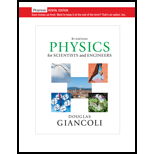
Can the diver of Fig. 11–2 do a somersault without having any initial rotation when she leaves the board?
Whether the diver do somersault without having any initial rotation when she leaves the board.
Answer to Problem 1Q
No, the diver can’t do somersault without having any initial rotation when she leaves the board.
Explanation of Solution
When the diver do somersault he will be in the air so that the net torque on the diver will be zero. The zero torque will result in the conservation of angular momentum. When the person leaves the board without any initial rotation, the initial angular momentum will be zero.
In order to obey the conservation of angular momentum the final momentum must be zero so that the person is unable to do a somersault. Thus it is not possible to do a somersault without having any initial rotation when she leaves the board.
Want to see more full solutions like this?
Chapter 11 Solutions
PHYSICS F/SCI.+ENGR.,CHAPTERS 1-37
Additional Science Textbook Solutions
The Cosmic Perspective Fundamentals (2nd Edition)
Lecture- Tutorials for Introductory Astronomy
Essential University Physics: Volume 2 (3rd Edition)
University Physics Volume 2
Physics for Scientists and Engineers: A Strategic Approach with Modern Physics (4th Edition)
University Physics with Modern Physics (14th Edition)
- If the torque acting on a particle about an axis through a certain origin is zero, what can you say about its angular momentum about that axis?arrow_forwardCalculate the rotational kinetic energy of a 12-kg motorcycle wheel if its angular velocity is 120 rad/s and its inner radius is 0.280 m and outer radius 0.330 m.arrow_forwardA solid cylinder of mass 2.0 kg and radius 20 cm is rotating counterclockwise around a vertical axis through its center at 600 rev/min. A second solid cylinder of the same mass and radius is rotating clockwise around the same vertical axis at 900 rev/min. If the cylinders couple so that they rotate about the same vertical axis, what is the angular velocity of the combination?arrow_forward
- The precession angular velocity of a gyroscope is 1.0 rad/s. If the mass of the rotating disk is 0.4 kg and its radius is 30 cm, as well as the distance from the center of mass to the pivot, what is the rotation rate in rev/s of the disk?arrow_forwardAn automobile engine can produce 200Nm of torque. Calculate the angular acceleration produced if 95.0 of this torque is applied to the drive shaft, axle, and rear wheels of a car, given the following information. The car is suspended so that the wheels can turn freely. Each wheel acts like a 15.0-kg disk that has a 0.180-m radius. The walls of each tire act like a 2.00-kg annular ring that has inside radius of 0.180 m and outside radius of 0.320 m. The tread of each tire acts like a 10.0-kg hoop of radius 0.330 m. The 14.0-kg axle acts like a rod that has a 2.00-cm radius. The 30.0-kg drive shaft acts like a rod that has a 3.20-cm radius.arrow_forwardA solid sphere is rotating about an axis through its center at a constant rotation rate. Another hollow sphere of the same mass and radius is rotating about its axis through the center at the same rotation rate. Which sphere has a greater rotational kinetic energy?arrow_forward
- A constant torque is applied to a rigid body whose moment of inertia is 4.0kgm2 around the axis of rotation. If the wheel starts from rest and attains an angular velocity of 20.0 rad/s in 10.0 s, what is the applied torque?arrow_forwardA thin rod of length 2.65 m and mass 13.7 kg is rotated at anangular speed of 3.89 rad/s around an axis perpendicular to therod and through one of its ends. Find the magnitude of the rodsangular momentum.arrow_forwardA wheel starts from rest and in 12.65 s is rotating with an angular speed of 5.435 rad/s. a. Find the magnitude of theconstant angular acceleration of the wheel. b. Through whatangle does the wheel move in 6.325 s?arrow_forward
- Can a single force produce a zero torque?arrow_forwardIf global warming continues, its likely that some ice from the polar ice caps of the Earth will melt and the water will be distributed closer to the equator. If this occurs, would the length of the day (one rotation) (a) increase, (b) decrease, or (c) remain the same?arrow_forwardTwo spheres, one hollow and one solid, are rotating with the same angular speed around an axis through their centers. Both spheres have the same mass and radius. Which sphere, if either, has the higher rotational kinetic energy? (a) The hollow I sphere, (b) The solid sphere, (c) They have the same kinetic energy.arrow_forward
 University Physics Volume 1PhysicsISBN:9781938168277Author:William Moebs, Samuel J. Ling, Jeff SannyPublisher:OpenStax - Rice University
University Physics Volume 1PhysicsISBN:9781938168277Author:William Moebs, Samuel J. Ling, Jeff SannyPublisher:OpenStax - Rice University Principles of Physics: A Calculus-Based TextPhysicsISBN:9781133104261Author:Raymond A. Serway, John W. JewettPublisher:Cengage Learning
Principles of Physics: A Calculus-Based TextPhysicsISBN:9781133104261Author:Raymond A. Serway, John W. JewettPublisher:Cengage Learning Physics for Scientists and Engineers: Foundations...PhysicsISBN:9781133939146Author:Katz, Debora M.Publisher:Cengage Learning
Physics for Scientists and Engineers: Foundations...PhysicsISBN:9781133939146Author:Katz, Debora M.Publisher:Cengage Learning College PhysicsPhysicsISBN:9781305952300Author:Raymond A. Serway, Chris VuillePublisher:Cengage Learning
College PhysicsPhysicsISBN:9781305952300Author:Raymond A. Serway, Chris VuillePublisher:Cengage Learning College PhysicsPhysicsISBN:9781285737027Author:Raymond A. Serway, Chris VuillePublisher:Cengage Learning
College PhysicsPhysicsISBN:9781285737027Author:Raymond A. Serway, Chris VuillePublisher:Cengage Learning




